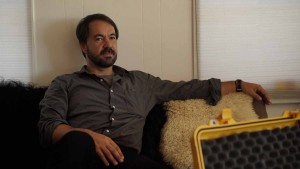
Set in the 1950s, Carol follows the relationship between a young, impressionable store clerk and the older, sophisticated woman that she falls in love with. The film has a decidedly European feel that takes its pacing from the way Haynes directs the internalized performances of Carol (Cate Blanchett) and Therese (Rooney Mara).
“The way Cate acts, it’s very certain and very direct. You know what she is going for. Rooney’s performance, it’s so full of details. I’m watching close-ups of Rooney; it’s quite amazing. She does a tiny little smile or a twitch of the eye and I want to stay with her a little longer,” revealed Gonçalves. “I’m slowing down the pace so that you can watch this, for lack of a better word, this seduction.”
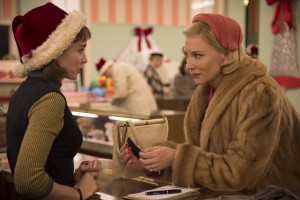
“I wanted the contrast in the film. The way Todd was directing, the beginning was slower paced. The rhythms are a half step slower than you probably expect, but it’s about discovering and growing. It’s about trying to find out who you are,” shared Gonçalves.
When Therese is with her boyfriend, she is direct. The pace is faster and has more overlap. When she is with Carol, it is a different world that she is tenuously exploring.
Early on before reading the script, Gonçalves had read the book “The Price of Salt” that the film was based upon. Even though the two art forms were quite different, the book formed an emotional groundwork for the movie. By knowing that world, he could understand references the director made to the novel.
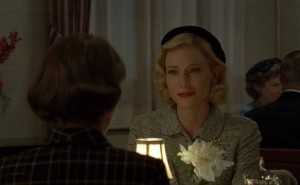 The differences were illustrated to Gonçalves in a sequence when Therese is passing through a tunnel on a trip with Carol in her car. The editor remembered how the novel dramatically talked about Therese’s love for the other woman. With extreme emotion, she desired the tunnel to cave in so that they could be together in the mangled wreck.
The differences were illustrated to Gonçalves in a sequence when Therese is passing through a tunnel on a trip with Carol in her car. The editor remembered how the novel dramatically talked about Therese’s love for the other woman. With extreme emotion, she desired the tunnel to cave in so that they could be together in the mangled wreck.
When Gonçalves was cutting the scene in the film, he felt something was missing. He did not feel that over-the-top emotional response that he got reading the inner thoughts of the character in the novel, something that would probably not be portrayed by words in a film. During the shoot, the production could only take four passes in the tunnel, so Edward Lachman, the cinematographer, experimented with different techniques on each take, sometimes shifting focus, moving the camera around, changing the aperture or playing with the lights.
“When I saw that I thought, wait a second, I can put something together that is more like a dream sequence even if it was very short. I could play with sounds. The music playing on the radio becomes an echo and then the score comes in. It is a completely different world,” explained Gonçalves. “I had those tools and I was just trying to play with it. When he was shooting, Todd wasn’t telling me what to do. He was communicating with me through the footage.”
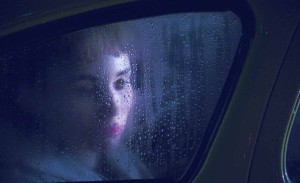 The flashbacks in the film were a bit of a challenge in the editing, as they often can be. According to Gonçalves, the party at the end of the film was the spine of the book with the whole relationship told in back and forth flashbacks with the party, but that device was too confusing in the film, which was originally scripted that way.
The flashbacks in the film were a bit of a challenge in the editing, as they often can be. According to Gonçalves, the party at the end of the film was the spine of the book with the whole relationship told in back and forth flashbacks with the party, but that device was too confusing in the film, which was originally scripted that way.
The structure of the movie had to be different than that of the book. The world of the budding relationship was so engrossing that when the story shifted back to the party, the filmmakers found that they wanted to remain in the world of the love story. They kept pushing the party further back in the film. They ended up bookending the film with a flashback at the very beginning and then again close to the end.
Many scenes in the film had an abstract quality in the way they were shot using methods like blurry images and reflections on glass. Editing is about focus, what and when you let the audience see, so Gonçalves made specific choices.
“That was the language of the film. Because you don’t see everything, what you do see, you feel like you’ve found something,” commented Gonçalves. “It’s blurry, blurry, blurry and all of a sudden there is a kid that passes that you catch. I always made sure through the abstraction that there is a point of reference or a point of view or something that catches you. That is directing you towards the relationship, too. A lot of it is through glass. Once you see through glass there will be something there.”
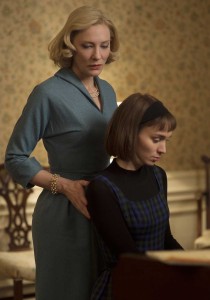 There are shapes to scenes, which come from how they are edited and the choices of whether to use a wide, a medium or a closeup. That is the specific language of filmmaking that affects the tone and meaning of the story. With the intent of getting deep into the characters’ thoughts and desires, the film used many closeups to show the details of the performances that would be missed if you were not close to the characters.
There are shapes to scenes, which come from how they are edited and the choices of whether to use a wide, a medium or a closeup. That is the specific language of filmmaking that affects the tone and meaning of the story. With the intent of getting deep into the characters’ thoughts and desires, the film used many closeups to show the details of the performances that would be missed if you were not close to the characters.
“It’s so strong how you play those,” said Gonçalves. “It’s like when you have an orchestra. When do you play this instrument or that instrument? It’s a bit like that.”
Closer to the tail end of the film, as the characters get physically closer to each other, Gonçalves tended to cut less and wider. In the hotel room before the love scenes, Carol and Therese are just playing, doing music and makeup in one wide shot. There is no separation between the two. They are allowed together in the frame and permitted to “do the dance” without cutting away.
Gonçalves loves the last scene of the film and the ambiguity of whether or not the two women actually see each other as Therese approaches Carol’s table. The eye lines seem a bit off, leaving the viewer to question if they have finally connected again.
“I kept watching. Are they crossing the line? It was driving me crazy. Where are they looking? Do they really see each other? It’s a little unhinged and I think it helps,” Gonçalves added, “It’s sort of The Graduate moment. They are together and now what?”
The scene cuts to black and life starts.





